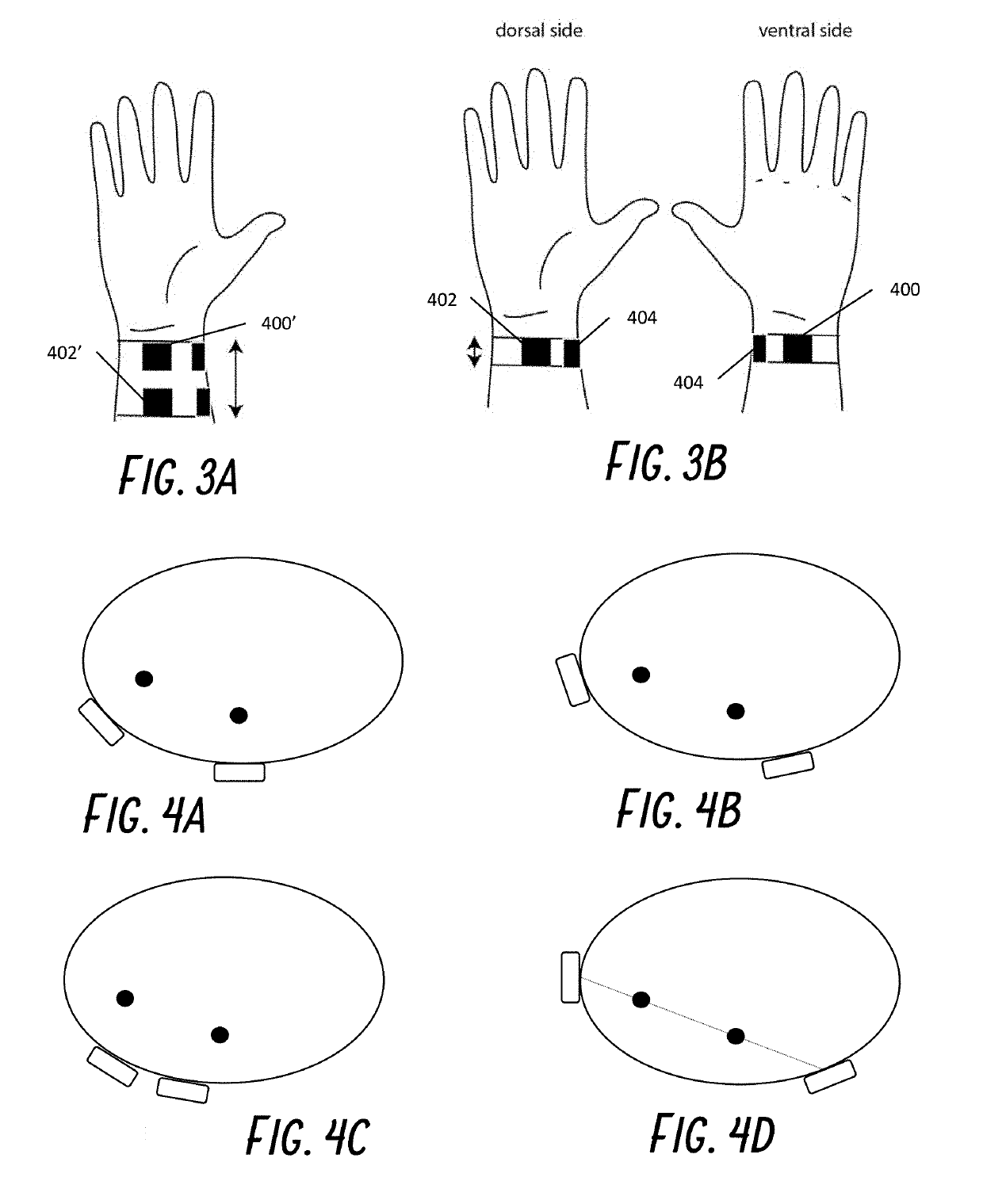Dry electrodes for transcutaneous nerve stimulation
a technology of transcutaneous nerves and electrodes, applied in the field of electrical stimulation of peripheral nerves, can solve the problems of hydrogel electrodes not being desirable for repeated use, easy and quickly become dirty or degraded, and skin irritation
- Summary
- Abstract
- Description
- Claims
- Application Information
AI Technical Summary
Benefits of technology
Problems solved by technology
Method used
Image
Examples
example 1
[0118]FIGS. 17A and 17B demonstrate dramatic tremor reduction after providing electrical stimulation to nerves in the patient's wrist in accordance with the embodiments described herein. FIG. 17A is an example of the tremor reduction detected using a gyroscope to measure the tremor energy during a postural hold. The severity of the tremor is measured by the energy output according to the hand gyroscope. Two baseline measurements were recorded with no stimulation. The energy was measured for different durations of the postural hold (0, 10, 20, or 30 min) either before, during, or after application of a therapeutic stimulation protocol by a nerve stimulation device as described according to the embodiments herein. The results demonstrate discernable reduction in hand tremor both during and after the stimulation. FIG. 17B is an example of the tremor reduction as detected by having the patient draw a spiral before nerve stimulation (left) and after nerve stimulation (right). The spiral ...
example 2
[0119]FIG. 18A illustrates examples of an embodiment of a wearable band 1800 comprising two dry electrodes 1802 that was tested on 15 subjects in order to determine if the electrodes were comfortable for all day use. Subjects were stimulated for 120 minutes, which was equivalent to about 3 typical stimulation sessions for treating hand tremors due to essential tremor. In addition, subjects wore the band 1800 for an additional 8 hours without stimulation, for a total wear time of 10 hours per day. The target acceptance criteria was that at least 80% of the subjects would find the device comfortable for all day use.
[0120]FIGS. 18B-18F illustrates preliminary data from the study that show that the vast majority of subjects felt that wearing and using the dry electrodes was comfortable. FIG. 18B shows the distribution of wrist size (small, medium, or large) for 14 of the subjects. Small wrists sized at or under 13.5-15.5 cm, medium wrists sized between 15.5-17.5 cm, and large wrists siz...
PUM
 Login to View More
Login to View More Abstract
Description
Claims
Application Information
 Login to View More
Login to View More - R&D
- Intellectual Property
- Life Sciences
- Materials
- Tech Scout
- Unparalleled Data Quality
- Higher Quality Content
- 60% Fewer Hallucinations
Browse by: Latest US Patents, China's latest patents, Technical Efficacy Thesaurus, Application Domain, Technology Topic, Popular Technical Reports.
© 2025 PatSnap. All rights reserved.Legal|Privacy policy|Modern Slavery Act Transparency Statement|Sitemap|About US| Contact US: help@patsnap.com



